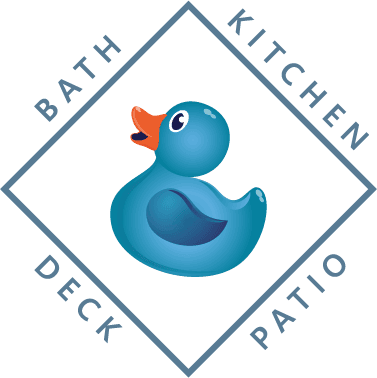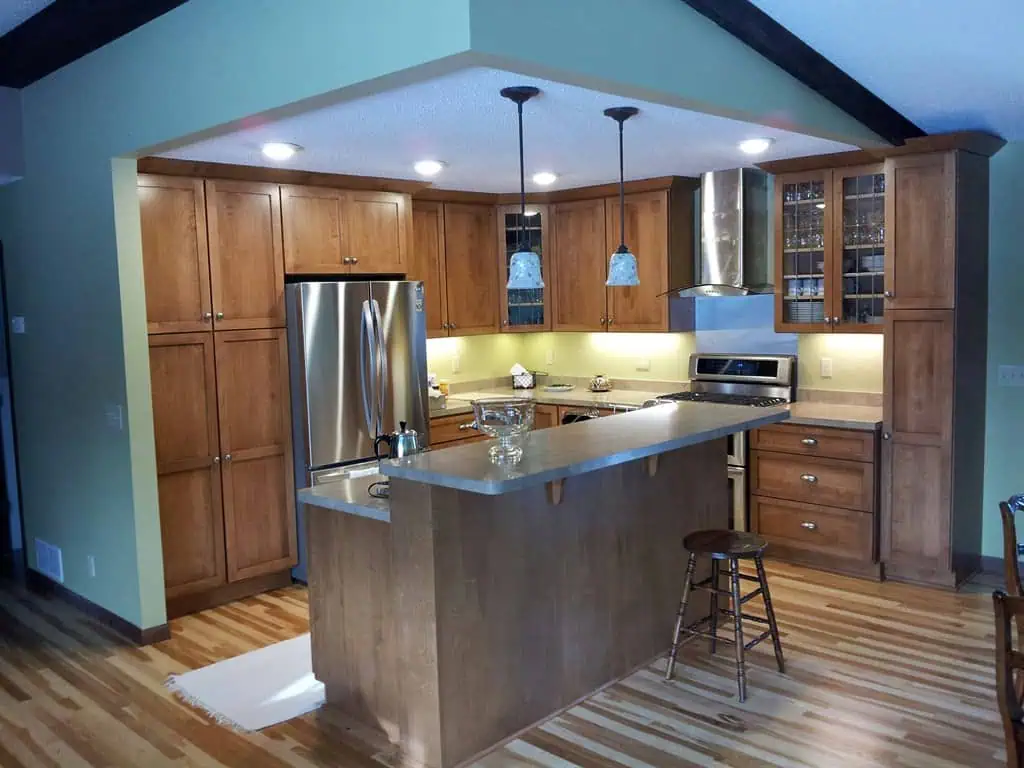Step into the heart of any home, and you’ll find yourself in the kitchen. This cherished space has undergone a remarkable transformation over the centuries, evolving from a simple cooking area to the multifunctional hub we know today. Join us as we embark on a fascinating journey through time, exploring the rich history of home kitchens and uncovering the stories they tell about our changing lifestyles, technologies, and design preferences.
The Early American Kitchen: A Hearth of Tradition
Imagine yourself in a colonial-era home, where the kitchen was the center of daily life. The focal point of these early American kitchens was the open hearth – a large fireplace that served as both the primary heat source and cooking area. Families gathered around this warm, inviting space, not just for meals but for socializing and completing household chores.
Have you ever wondered how our ancestors managed to prepare meals without modern appliances? The design of these kitchens was simple and functional, with limited storage options. Large wooden tables served multiple purposes, from food preparation to dining. Shelves and hooks adorned the walls, holding essential cooking tools and utensils. Natural materials like wood, stone, and brick dominated the space, reflecting the resources available at the time.
Cooking tools and utensils evolved alongside the kitchen itself. Cast iron pots and kettles hung from wrought iron cranes over the fire, while long-handled wooden spoons and ladles allowed cooks to tend to their meals safely. As time progressed, innovations like the beehive oven – built into the side of the fireplace – improved baking capabilities and expanded culinary possibilities.
Tip for modern homeowners: While you may not have an open hearth, you can incorporate elements of early American kitchens into your home. Consider adding a rustic wooden table as a focal point or using wrought iron hooks to display your favorite cookware.
The Victorian Kitchen: A Study in Opulence and Function
As we move into the Victorian era (1830s-1900s), we witness a dramatic shift in kitchen design and functionality. The introduction of cast iron stoves revolutionized cooking methods, offering more precise temperature control and freeing up valuable floor space. Gas appliances soon followed, further modernizing the kitchen experience.
Storage and organization became increasingly important during this period. Elaborate cabinetry, often featuring intricate carvings and decorative hardware, provided ample space for storing dishes, cookware, and pantry items. The concept of the “butler’s pantry” emerged, offering additional storage and workspace between the kitchen and dining room.
Victorian kitchens were a testament to the era’s love of ornamentation. Decorative elements abounded, from colorful tile backsplashes to ornate ceiling moldings. However, this beauty often came at a price – literally. The rise of the “servant’s kitchen” meant that in wealthy households, these spaces were primarily the domain of staff rather than family members.
How can you bring a touch of Victorian elegance to your modern kitchen? Consider adding decorative moldings to your cabinets or installing a colorful tile backsplash. A butler’s pantry, if space allows, can provide valuable storage and prep space for entertaining.
The Arts and Crafts Kitchen: Embracing Simplicity and Craftsmanship
As the Victorian era gave way to the Arts and Crafts movement (1880s-1920s), kitchen design took a turn towards simplicity and functionality. This style emphasized natural materials and expert craftsmanship, rejecting the mass-produced ornamentation of the previous period.
Built-in appliances and custom cabinetry became hallmarks of Arts and Crafts kitchens. Wooden cabinets, often crafted from oak or other sturdy hardwoods, featured clean lines and minimal decoration. The focus was on quality construction and practical design, with features like pull-out cutting boards and built-in flour bins enhancing functionality.
Metals like copper and brass found new life as decorative accents in these kitchens. Hammered copper sinks, brass hardware, and wrought iron light fixtures added warmth and character to the space. These elements not only served a practical purpose but also showcased the skill of artisans and craftsmen.
For homeowners looking to incorporate Arts and Crafts elements, consider investing in high-quality, handcrafted cabinetry or adding copper accents through lighting fixtures or a statement sink.
The Art Deco Kitchen: Embracing Modernity and Glamour
The Roaring Twenties ushered in a new era of kitchen design with the Art Deco movement (1920s-1940s). Streamlined and geometric shapes took center stage, reflecting the era’s fascination with progress and modernity. Kitchens of this period were bold and eye-catching, featuring bright colors and daring patterns.
Linoleum flooring, often in checkerboard or geometric designs, became popular during this time. Walls might be adorned with vibrant wallpaper or glossy tiles in contrasting colors. Cabinetry took on sleeker forms, with curved edges and chrome hardware adding a touch of glamour to the space.
This period also saw the introduction of major modern appliances that we now take for granted. Refrigerators and dishwashers made their debut, revolutionizing food storage and cleanup. These new additions not only improved efficiency but also became status symbols in their own right.
To add a touch of Art Deco glamour to your kitchen, consider incorporating geometric patterns through backsplash tiles or flooring. Chrome hardware and curved edges on cabinetry can also evoke this stylish era.
The Mid-Century Modern Kitchen: Embracing Openness and Innovation
As we enter the mid-20th century (1940s-1960s), kitchen design embraced openness and innovation. The concept of the “kitchen triangle” – the ideal arrangement of stove, sink, and refrigerator – emerged, improving workflow and efficiency. Open floor plans became increasingly popular, with kitchens flowing seamlessly into dining and living areas.
Built-in appliances reached new heights of integration, with ovens, cooktops, and even refrigerators disappearing into sleek cabinetry. The introduction of innovative materials like Formica for countertops and stainless steel for appliances gave kitchens a futuristic feel. These easy-to-clean surfaces were a boon for busy homemakers.
Natural light took center stage in mid-century modern kitchens. Large windows and skylights brightened the space, while indoor plants brought a touch of nature indoors. The overall effect was one of airiness and optimism, reflecting the post-war era’s forward-looking spirit.
For those inspired by mid-century design, consider opening up your kitchen to adjacent living spaces. Incorporate plenty of natural light and add pops of color through retro-inspired appliances or accessories.
The Retro Kitchen: A Nostalgic Revival
The 1970s and 1980s saw a fascinating revival of vintage styles in kitchen design. Elements from Art Deco and Victorian eras made a comeback, often with a playful, exaggerated twist. Bright colors and bold patterns once again dominated the space, creating kitchens that were anything but subtle.
Appliances in avocado green, harvest gold, and burnt orange became iconic of this period. Wallpaper featuring large-scale floral or geometric prints adorned walls, while linoleum floors continued their popularity. Wood-paneled cabinets, often in dark tones, added warmth to the space.
This era also saw the introduction of new appliances that would change the way we cook and prepare food. Microwave ovens and food processors became must-have items, promising convenience and time-saving benefits for busy households.
While you might not want to fully embrace the bold colors of the retro era, you can incorporate elements of this style through vintage-inspired small appliances or by adding a statement wallpaper to one wall.
The Contemporary Kitchen: Where Form Meets Function
As we approach the present day, kitchen design has evolved to prioritize functionality, aesthetics, and sustainability. Today’s kitchens are true multi-purpose spaces, serving as areas for cooking, dining, working, and socializing.
High-end appliances and materials have become increasingly accessible, allowing homeowners to create professional-grade cooking spaces. Quartz countertops, custom cabinetry, and commercial-style ranges are just a few examples of the luxury features found in many modern kitchens.
Technology has also found its place in the contemporary kitchen. Smart appliances, touchless faucets, and integrated charging stations are becoming commonplace. These innovations not only add convenience but also improve energy efficiency and sustainability.
Open and flexible designs continue to dominate, with large islands serving as the centerpiece of many kitchens. These multifunctional spaces can accommodate food preparation, casual dining, homework sessions, and more, truly making the kitchen the heart of the home.
When designing a contemporary kitchen, focus on creating a flexible space that meets your family’s unique needs. Incorporate smart technology where it makes sense for your lifestyle, and don’t be afraid to mix elements from different eras to create a personalized look.
Preserving and Restoring Historical Home Kitchens
For those lucky enough to own a home with a historical kitchen, preserving its character while updating its functionality can be a rewarding challenge. The key is to strike a balance between maintaining historical integrity and incorporating modern conveniences.
When restoring original features, it’s crucial to research the appropriate techniques and materials for your kitchen’s era. This might involve stripping layers of paint to reveal original wood finishes, repairing vintage tile work, or sourcing period-appropriate hardware.
Modernizing a historical kitchen requires careful consideration. Hidden appliances, custom cabinetry designed to match original styles, and subtle lighting upgrades can bring your kitchen into the 21st century without sacrificing its charm.
Finding skilled craftsmen and sourcing authentic materials is essential for a successful restoration. Local historical societies, preservation organizations, and specialized contractors can be invaluable resources in this process.
Bringing History Home: Inspiration for Your Kitchen
As we conclude our journey through the evolution of historical home kitchens, it’s clear that while styles and technologies have changed dramatically, the kitchen’s role as the heart of the home remains constant. Whether you’re working with a colonial hearth or a sleek modern space, understanding the rich history of kitchen design can inspire and inform your own culinary haven.
Here are some final tips for incorporating historical elements into your kitchen:
- Choose one or two eras that resonate with your personal style and the architecture of your home.
- Look for vintage or reproduction hardware, lighting fixtures, and small appliances to add character.
- Consider using traditional materials like wood, stone, or copper in modern applications.
- Don’t be afraid to mix elements from different periods – an eclectic approach can create a unique and personalized space.
- Remember that functionality is key – choose historical elements that enhance, rather than hinder, your kitchen’s usability.
By blending the best of the past with the innovations of the present, you can create a kitchen that not only meets your needs but also tells a story – your story – for generations to come. What elements of historical kitchen design will you incorporate into your home?

